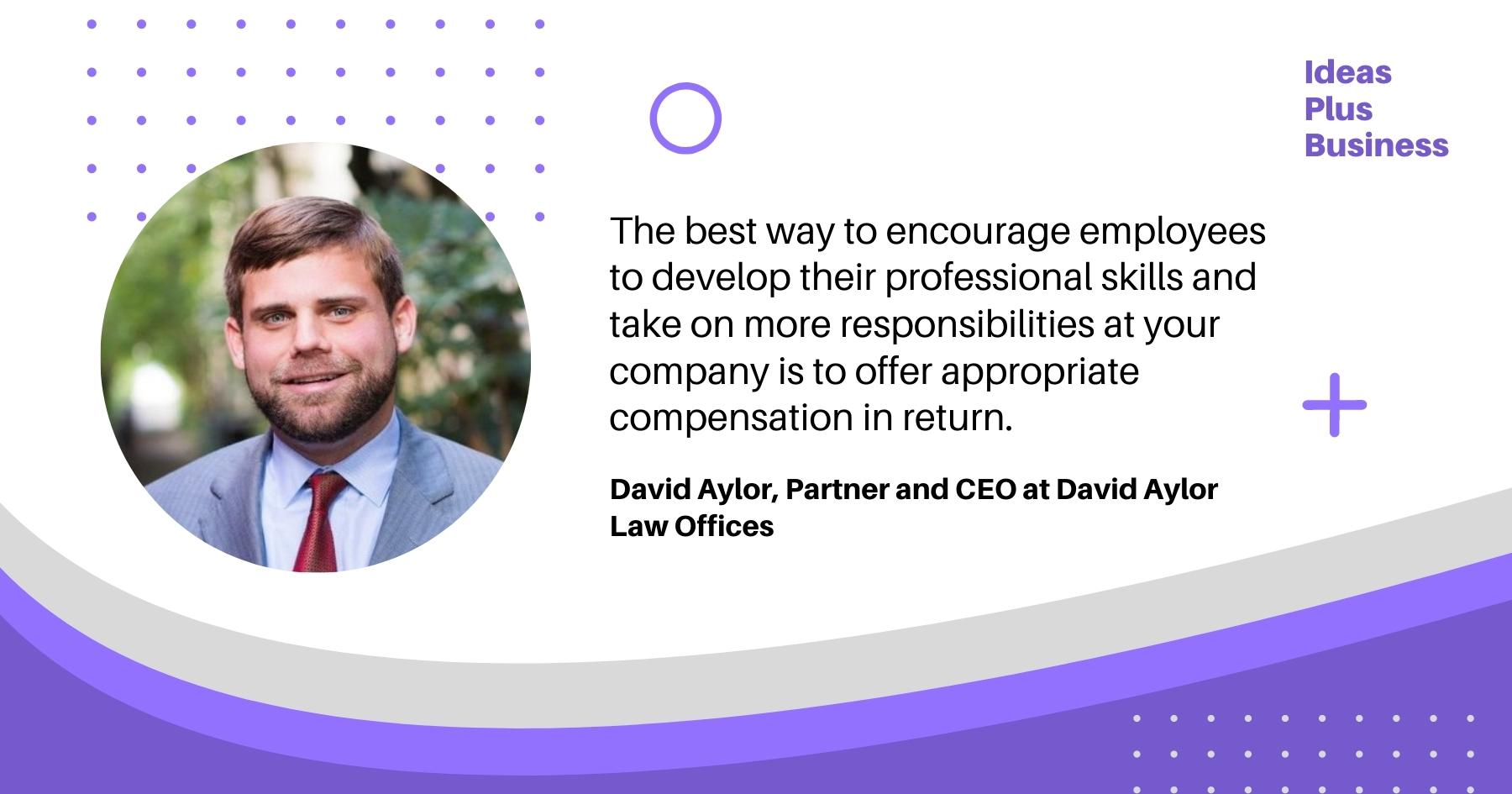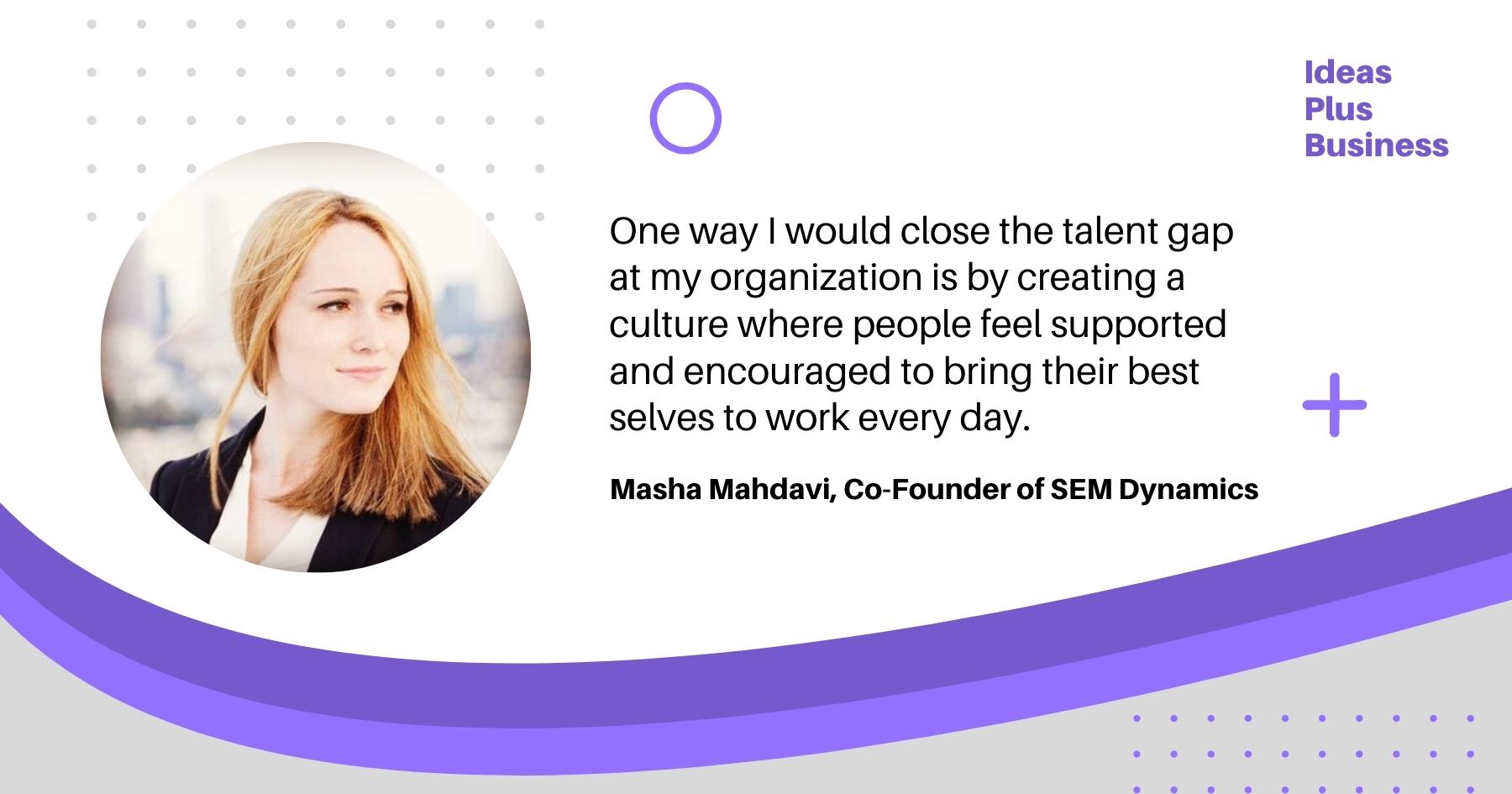How can you close the talent gap at your organization?
To help you close the talent gap in your organization, we asked HR managers and business leaders this question for their best strategies. From encouraging employee upskilling to developing a mentorship culture in your organization, there are several strategies that you may adopt to close the talent gap within your workforce.

Ways to close the talent gap in your organization
Here are nine ways to close the talent gap at your organization:
- Encourage Employee Upskilling With Online Courses
- Provide Compensation for Skill Development
- Offer Apprenticeship Programs
- Support Personal and Career Development Goals With Perks
- Detail Your Talent Needs to Help Focus Your Efforts
- Create a Culture That Brings The Best Out of Your Employees
- Make Your Hiring Criteria Flexible
- Identify and Optimize Your Areas of Opportunity.
- Develop a Mentorship Culture in Your Organization
1. Encourage Employee Upskilling With Online Courses
Recently, we have started a program to offer free courses from platforms like Udemy, Coursera and edX to employees based on their job descriptions.
This program is both an investment for the company and an incentive for our current and future employees. As an employer, I believe every business needs to invest in upskilling. There is a global skill shortage right now. Every business is struggling to find the right prospects to expand its team.
It is better to arm your current employees with skills and knowledge so that you don’t waste time hunting for talent that doesn’t exist.
Chris Nddie, ClothingRIC
2. Provide Compensation for Skill Development
The best way to encourage employees to develop their professional skills and take on more responsibilities at your company is to offer appropriate compensation in return.
Encourage your employees to improve their professional skills through online or in-person courses. Provide financial rewards to those who complete this training.
If learning these skills opens your employees to more work, make sure they know that they will be compensated accordingly. Many employees are discouraged from learning more skills because they do not want a higher workload for the same pay they were receiving previously.
David Aylor, David Aylor Law Offices

3. Offer Apprenticeship Programs
One possibility for closing the talent gap would be to start an apprenticeship program. Apprentices could work alongside employees in order to learn the ropes and get hands-on experience. They would get practice working with actual clients.
And this way, we could hire people who are up-to-date on best practices and who know how we do things for our clients.
Devin Schumacher, SERP
4. Support Personal and Career Development Goals With Perks
Everyone loves getting more perks than they asked for. To fill the talent gap, do the same with your employees and candidates.
You need to provide them with opportunities related to their personal and career development so that it is not all about the job.
They’ll be much more interested in the job because they’ll not only be paid but they’ll also be given new opportunities to better themselves in the future. This way, you can see which talent fits best in your organization and attract them by offering the perks.
These perks can help them get a further job once they have completed their contract; coach for personal and professional development; build skills; train in different work areas; collaborate with other companies and so on.
These on-the-job opportunities direct them towards your company and help you to fill the gap with many effective talents.
Anthony King, Transport Executive
5. Detail Your Talent Needs to Help Focus Your Efforts
The way to close the talent gap is to write out our priority needs and the skills we need to fill the most along with the jobs we have open and could have open over the next year.
Once we have that list, we can target those areas in two ways. The first way is to identify capable employees and give them more training to fill them. The second is to recruit specifically for those areas.
The problem seems to be that we don’t know exactly what we need until we need it, such as someone retiring or going on vacation. Planning is the best answer to resolve that.
Bruce Tasios, Tasios Orthodontics
6. Create a Culture That Brings The Best Out of Your Employees
One way I would close the talent gap at my organization is by creating a culture where people feel supported and encouraged to bring their best selves to work every day.
I believe that a company can’t expect to be successful if it doesn’t have a design for how people are going to work together, and what the company will look like when they’ve achieved its goals. In turn, this means that you need to make sure everyone has access to resources, whether those resources are technical or interpersonal.
Masha Mahdavi, SEM Dynamics

7. Make Your Hiring Criteria Flexible
Sometimes when you encounter a talent gap that is taking too much time to fill, you have to be flexible with your criteria.
In addition to that flexibility, you need to be prepared to spend extra resources getting the new hire up to speed to fill that gap. If you are flexible but offer no support, the gap will only widen as your new hire falls behind or gets swept up in the status quo of your workplace.
Hiring this way is difficult because it forces you to assess the potential of a candidate rather than their current skill set. This is where personality and a demonstrable willingness to learn become a higher priority for recruiters looking for someone to eventually fill that gap.
Volodymyr Shchegel, Clario
8. Identify and Optimize Your Areas of Opportunity
Closing the talent gap means more than following a blanket educational approach. While it is great to invest in the learning and development of your team, you must ensure that the source of their learning is both useful and practical in relation to their roles within the workplace.
For instance, training your HR department on how to use a new accounting software would be an impractical spend of company resources. Training your finance department to do the same would be greatly beneficial.
To start with, zoom out and identify your organization’s most pressing needs. Consider whether there are skills that are lacking, or if certain departments are less productive than they could be. These are known as your areas of opportunity, and you can optimize them through the use of skills assessments and targeted training initiatives.
You may also incentivize the process by offering increased advancement opportunities within the workplace, giving employees a strong reason to grow their skills.
Max Wesman, GoodHire

9. Develop a Mentorship Culture in Your Organization
Mentorship is a powerful way to reduce talent gaps and help employees reach their full potential. By pairing experienced employees with less-experienced ones, organizations can create a more supportive environment in which employees can learn and upskill.
Mentorship can also provide a more agile means of increasing the skill base within an organization when compared to more formal training processes, as the focus of mentorship is typically more flexible, and can therefore be more dynamic in responding to more acute skills shortages.
Mentorship is also a fantastic means of increasing an organization’s retention of talent, which is in itself an effective bulwark against emerging talent gaps.
Saadia Hussain, Pearl Scan

Brett Farmiloe is the founder of Terkel, a platform where business leaders can answer questions related to their expertise and get published in articles featuring their insights.

